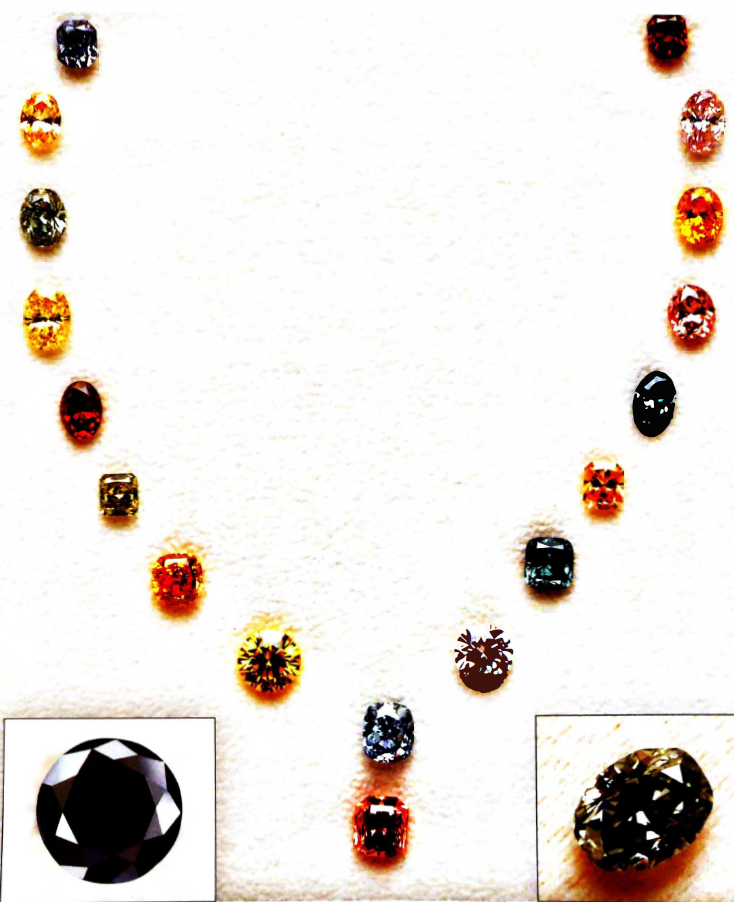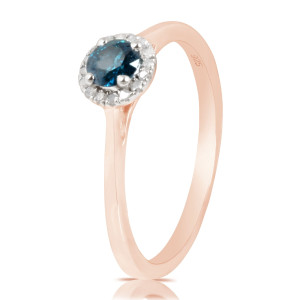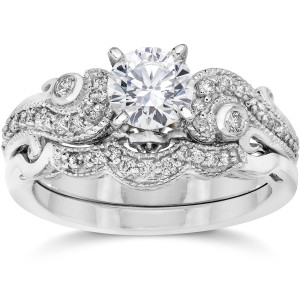If you were to place a diamond tennis bracelet under an ultraviolet light, many of the diamonds would probably have a noticeable blue glow and some would probably show hardly any glow or none. This is because diamonds are often fluorescent, which means they omit light when stimulated by UV lights or sunlight. Normally the fluorescence is blue but occasionally it's yellow, white or orange. The Hope Diamond has a distinctive red fluorescence.
There's a lot of misinformation about diamond fluorescence. For example, one dealer who advises consumers on the Internet and in a publication has stated, "If a diamond has fluorescence, it will have a cloudy or milky appearance, especially in sunlight." You can prove this is false by just looking at some transparent fluorescent diamonds. Conversely, there are cloudy diamonds that are not fluorescent. When buying a diamond, you should judge its transparency by its appearance, not by a lab report comment stating it's fluorescent.
According to the Rapaport Diamond Report, the impact of blue fluorescence on price depends on its noticeability. "Fluorescence often adds value to lower color stones as it gives the stones a whiter, brighter appearance." For example, very strong blue fluorescence can add 0-3 % to the value of I, J & K color stones. Strong and medium blue fluorescence may add 0-2 %.
Yell ow fluorescence is considered negative and can discount the value of the stone by 5-10 % . In D-H color stones with a clarity of IF-VS, fluorescence of any color may have a negative impact. The discount may be 3-15 % for very strong blue fluorescence. Strong blue fluorescence usually has no impact on the prices of F-H color diamonds with a clarity of SI 1-I3.
The Spring-Summer 2000 issue of the "Professional Gemologist" newsletter has a good discussion on diamond fluorescence. In it, Tom Tashey, director of PGS (Professional Gem Sciences Inc.), states that when he began his gemological career at GIA's Gem Trade Laboratory (1975-1978), blue fluorescence was considered an asset to diamonds, even to those of top color and clarity. In fact GIA's diamond grading reports would include the following statement on reports of strongly fluorescent diamonds. "The ultraviolet fluorescence of this diamond will enhance its appearance in daylight." He suggests that the negative attitude towards blue fluorescence in top-color diamonds probably began when an investor at the market peak around 1979 tried to liquidate his "top quality investments" which had very strong blue fluorescence.
The investor may have been told his diamonds had a hazy appearance and consequently were not worth near what he thought they were. Tashey adds that in his 25 years of grading diamonds, he's only seen 10-12 fluorescent stones with a hazy or cloudy transparency. Dealers don't normally send cloudy diamonds to labs for grading.
Tashey also presents another reason why fluorescent diamonds of top quality may be discounted today. He says diamond grading lights can emit a lot of UV radiation, so labs may overgrade some fluorescent diamonds viewed under these lights if no UV absorbing filter is used. The market may have responded by discounting them to compensate for overgrading.
If there's a question about the color grade of a fluorescent diamond, compare it next to a non-fluorescent diamond of the same color grade under a different light-one with hardly any UV radiation such as a diffused light bulb or a filtered fluorescent light. If the stones really have the same color grade, then the fluorescent stone should not appear to have more color than the other stone. For your protection, the grades should be ones established by an independent grading laboratory rather than by the seller.
 |
|
Figure 1 - An array of natural color diamonds. The two photos at the bottom are enlarged views of a black diamond and a fancy intense green diamond (1.66 cts).
|


















































